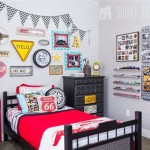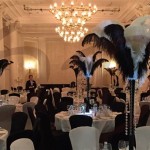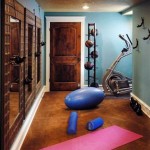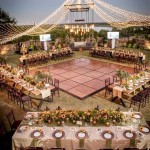How To Decorate a Venue for a Wedding
Decorating a wedding venue is a significant undertaking that transforms a space into a personalized celebration of love. Careful planning and execution are crucial to achieve the desired aesthetic and ambiance. This article outlines the essential steps and considerations involved in decorating a wedding venue.
Establishing a Vision: Before any physical decorating begins, establishing a clear vision is paramount. This involves determining the overall style or theme, desired color palette, and the level of formality. Inspiration can be drawn from various sources such as magazines, online platforms like Pinterest, and real-world weddings. Creating a mood board can help visualize and solidify the chosen aesthetic.
Budgeting and Prioritization: Setting a realistic budget is essential for effective venue decoration. Costs can quickly escalate, so careful allocation of funds is necessary. Prioritize key elements that contribute most significantly to the desired atmosphere. This might include floral arrangements, lighting, or draping. Consider DIY options for less crucial decorative elements to save costs.
Venue Assessment and Measurements: Thorough assessment of the venue is critical. This includes taking precise measurements of the space, noting existing features like architectural details and permanent fixtures. Understanding the venue's layout and limitations is essential for planning the placement of decorations and ensuring they fit appropriately.
Selecting Key Decorative Elements: Once the vision and budget are established, the selection of key decorative elements can commence. This typically includes centerpieces, table linens, chair covers, backdrops, and lighting. These elements should align with the established theme and color palette.
Floral Arrangements: Flowers play a significant role in wedding décor, adding color, fragrance, and elegance to the venue. Choosing the right types and colors of flowers is important. Consider the seasonality of flowers to ensure availability and affordability. The style of arrangements should complement the overall theme, from classic bouquets to more contemporary arrangements.
Lighting Design: Lighting significantly impacts the ambiance of a wedding venue. Different types of lighting create various effects. String lights evoke a romantic feel, while uplighting adds drama and dimension. Consider the time of day and the desired mood when planning the lighting design. Dimmable lights offer flexibility in adjusting the atmosphere throughout the event.
Table Settings and Linens: Table settings and linens contribute significantly to the overall aesthetic. Choose linens that complement the color scheme and add texture and visual interest. Consider charger plates, napkins, and cutlery that align with the chosen style. The arrangement of these elements should be both aesthetically pleasing and functional.
Draping and Backdrops: Draping and backdrops can transform a space, adding elegance and defining different areas within the venue. Fabric choices range from sheer and flowing materials to richer, more textured fabrics. Backdrops serve as focal points, particularly behind the head table or ceremony area. They can be adorned with flowers, lights, or other decorative elements.
Signage and Directional Cues: Clear and aesthetically pleasing signage helps guests navigate the venue. This includes welcome signs, seating charts, and directional signs for key areas like restrooms and the bar. Ensure the signage style complements the overall wedding theme.
Personal Touches and Details: Incorporating personal touches adds a unique and meaningful dimension to the wedding décor. This could include displaying photos of the couple, incorporating hobbies or shared interests, or creating customized favors. These details personalize the celebration and make it more memorable for the couple and their guests.
Timeline and Logistics: Developing a detailed timeline for decorating the venue is crucial. This includes scheduling delivery and setup of rentals, coordinating with vendors, and allocating sufficient time for each task. Having a clear plan ensures a smooth and efficient decorating process.
Setup and Installation: Careful and organized setup and installation of decorations is essential. Enlist the help of friends, family, or hired professionals to ensure everything is placed correctly and securely. Follow the predetermined layout plan and refer to the venue assessment notes.
Post-Wedding Cleanup and Removal: Planning for post-wedding cleanup and removal of decorations is necessary. Coordinate with the venue or rental companies regarding their policies and procedures. Assign specific tasks to individuals to ensure efficient and timely removal of all decorative elements.
Working with Professionals: Consider hiring a professional wedding decorator or planner, especially for larger or more complex events. Their expertise and experience can streamline the decorating process, ensuring a cohesive and well-executed design. They can also manage vendor communication and logistics.

How To Decorate A Wedding Venue Themes For Venues

Reception Décor Inspiration For Every Type Of Wedding Venue

Wedding Venue Decorating Tips And Ideas Site Name Arabia Weddings

Reception Décor Inspiration For Every Type Of Wedding Venue

30 Best Decor Ideas For Your Wedding Venue Happy App

25 Wedding Decoration Ideas For A Show Stopping Venue Reception Rooms Simple Decorations

25 Wedding Decoration Ideas For A Show Stopping Venue

How To Decorate Style Your Wedding Venue Wedinspire

Reception Décor Inspiration For Every Type Of Wedding Venue

Reception Décor Inspiration For Every Type Of Wedding Venue
Related Posts







